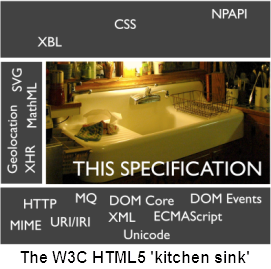The W3C and the HTML5 standard – light at the end of the tunnel
Irving, Texas – October 1, 2012 — Things appear to be very busy over at the W3C, where itsCEO Dr. Jeffrey Jaffe has requested the HTML5 Working Groups to pull their socks up and reach ‘recommendation status’ by the end of 2014. It would seem that the recent split which gave birth to the ‘HTML5 Living Standard’ has had its effect. Could this be the first step to a reunification? Unlikely. The fast-moving ‘Living Standard’ didn’t fit well with the process-laden W3C.
Work on HTML5 first started in 2007 and was originally set to run to 2022 with one of those ‘everything but the kitchen sink’ specifications you always get when you apply democratic principles to software development. Common sense seems finally to be prevailing as the decision to slice the monolithic standard into more mouth-size chunks has been made.
HTML5 is at the heart of most Internet application development these days and this good news paves the way for its widespread use to transform desktop business applications towards Cloud and mobile implementations.
An HTML 5.0 Candidate Release will be made by the end of this year with ‘recommendation status’ being sought forQ4 2014. An HTML5.1 release will be recommended two years later to capture those features that didn’t make 5.0.
What Four Js thinks
The HTML5 Living Standard has the browser as its ‘design center’, whereas the W3C covers a much broader field as can be seen from the diagram above. Four Js’ focus is the user experience and so it seems natural to follow Living Standard developments first and the W3C second. Either way, we follow what the market demands and will implement those features that our customers need most. Differences between the two standards can be viewed here.



